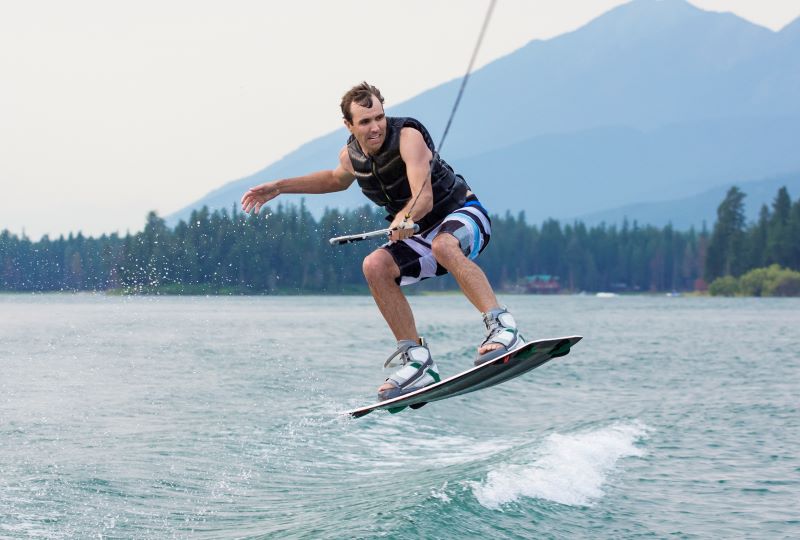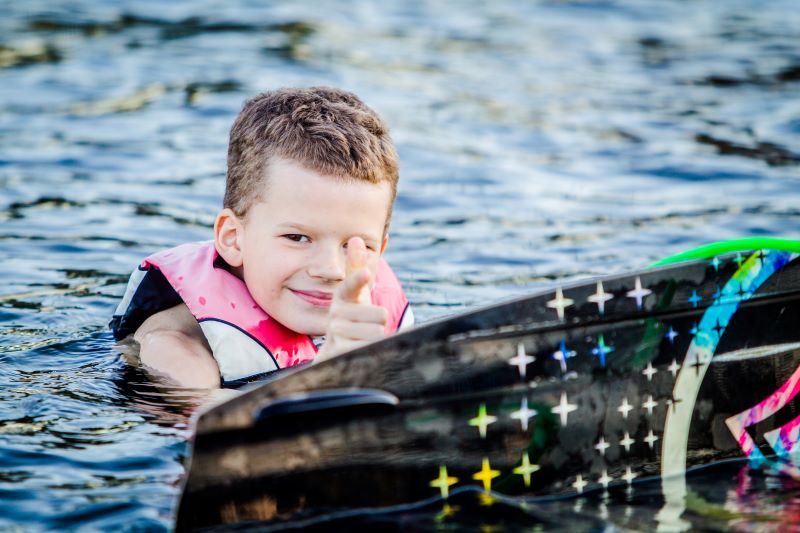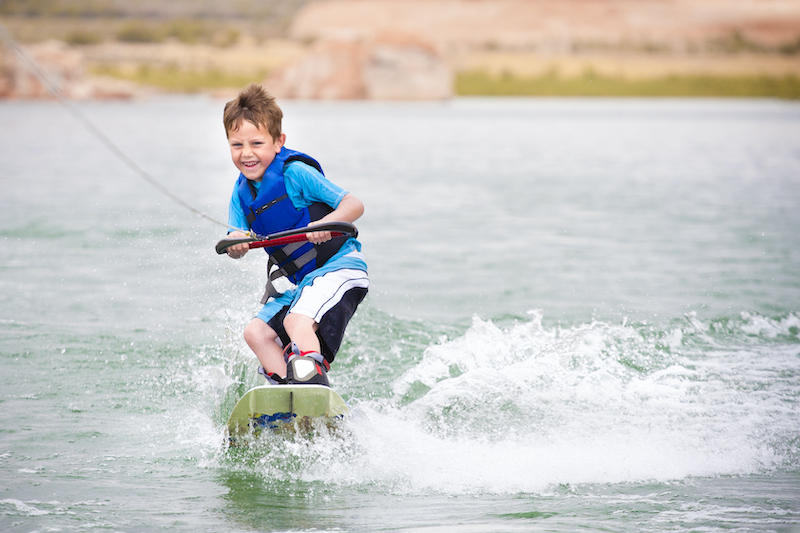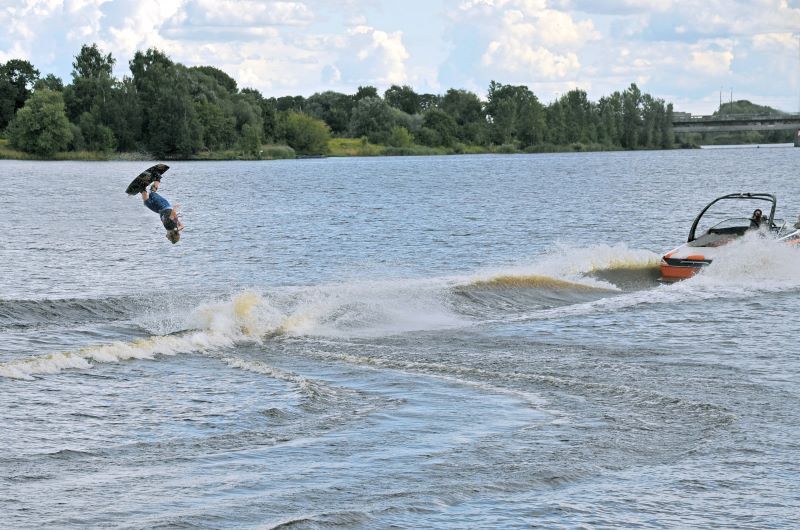Wakeboarding vs Water Skiing
There are many different types of water sports, including wakeboarding and water skiing, and often they can look similar, especially to someone who has never experienced any of them before. Today we’re going to look at wakeboarding vs water skiing.
The two sports have a lot in common: both involve a boat that tows a rider behind it and creates wakes for the rider to ride over. The similarities end there, however. Waterboarding and water skiing have different skills, learning curves, and equipment, to name a few differences.
If you’re trying to decide between wakeboarding vs water skiing, read on to learn more about the similarities and differences between the two sports.
Equipment
Equipment is the biggest difference when it comes to equipment in wakeboarding vs water skiing. The most obvious is the type of board. Wakeboarding uses a single, wide, flat board similar to a surfboard or a snowboard, and both feet are attached to it. Water skis are two separate boards, similar to snow skis, and one foot straps into each ski.
Other differences in equipment lie in the rope and handle. Wakeboard handles are wider than ski handles, making them better suited for spinning and transferring from one hand to the other during tricks. Wakeboard ropes aren’t as stretchy as ski ropes.
Wakeboarding boats and water skiing boats are somewhat different as well. Slower boats are better suited to wakeboarding, while water skiing requires a faster boat that can make tighter turns and accelerate quickly.
The one similarity between wakeboarding and water skiing is in slalom skiing, where the rider uses only one ski, but the rider has one foot behind the other facing forward, and the board is still narrower than a wakeboard.
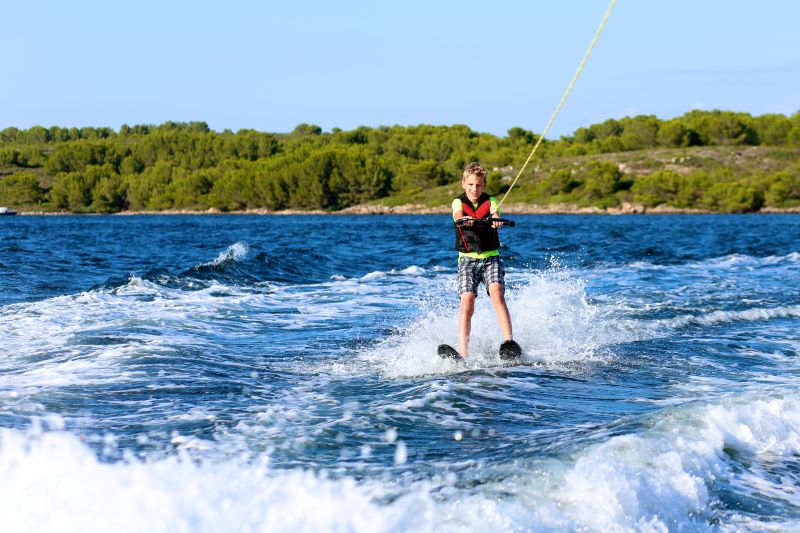
Pull speed and conditions
Wakeboarding speeds are generally much slower than water skiing speeds. In wakeboarding, the boat pulls you around 19-22 miles per hour, while with water skiing the boat pulls at 26-34 miles per hour.
Both sports are best performed in smooth, glassy water for the best experience. For water skiing, however, smooth water is more important, especially if you’re slaloming. Wakeboarding allows for slightly rougher water, though it won’t be as pleasant.
Getting up
Getting up means going from a sitting or lying-down position in the water to a standing position, ready to ride. Getting up in wakeboarding vs water skiing is different and has different difficulty levels, but which is easier is widely debated.
Some people say that getting up on water skis is easier than getting up on a wakeboard because once you’re up you don’t have to turn sideways. On the other hand, though, with water skis the skis can be wobbly and pull apart from each other.
Getting up on a slalom ski is generally harder than getting up on regular water skis or a wakeboard due to the smaller size of the board.
Tricks and skills
Wakeboarding involves a lot more tricks and jumps than water skiing. Wakeboarding tricks involve things like jumps, rolls, tantrums, grabs, and other tricks done in the air while holding on to the rope with one or both of your hands.
Water skiing involves fewer tricks and is more about cutting as hard as you can as fast as you can while spraying as much water as you can. Consequently, wakeboarding has a steeper learning curve and requires more skill. If you’re simply looking for speed and fun, water skiing is the way to go, but if you want to hone your skills, go with water skiing.
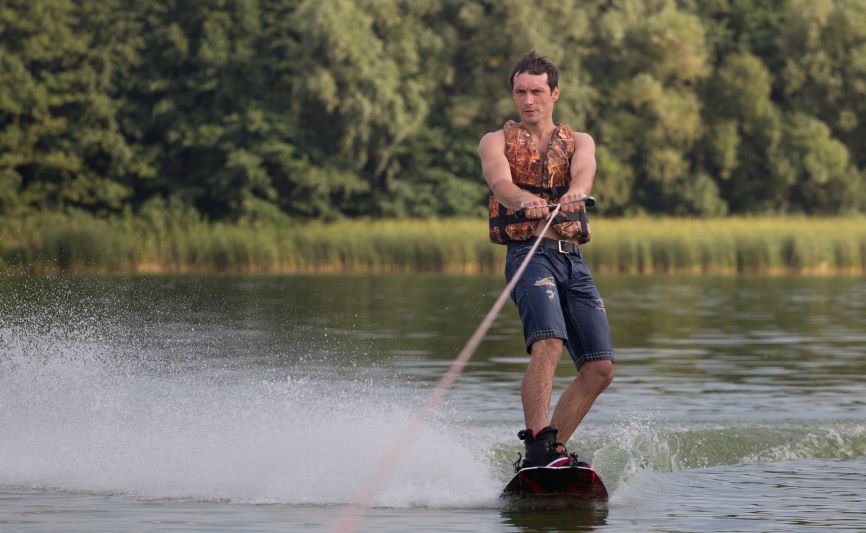
Risk of injury in wakeboarding vs water skiing
Injuries are common in both wakeboarding and water skiing, some minor and some more severe. Wakeboarding injuries are more likely to be in the head and neck, while water skiing injuries are more likely to be in the hips and legs. Both sports can lead to contusions and abrasions as well as fractures and cuts.
It’s estimated that severe injuries happen about 50% less often in wakeboarding than water skiing, making wakeboarding a bit safer. The more tricks a wakeboarder performs, the higher their risk of injury.
Location
Looking for a popular wakeboard to get you out on the water
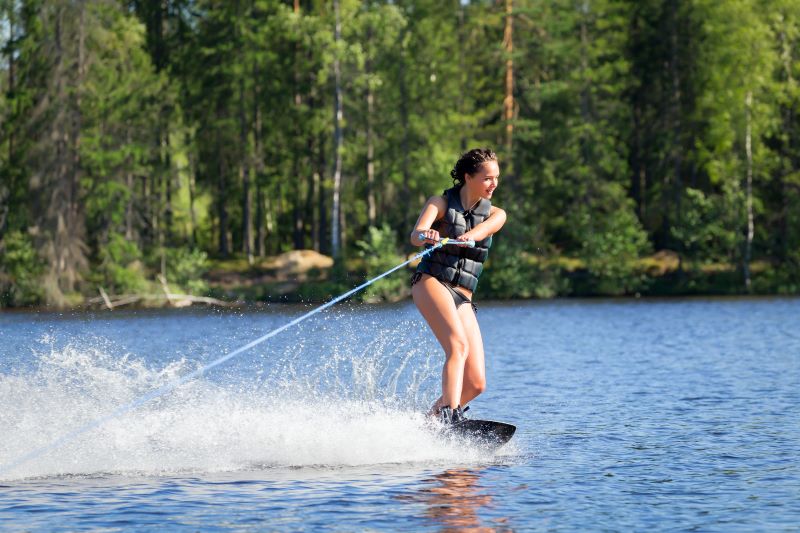
Is wakeboarding easier than water skiing?
Because of lower speeds and more contact surface from the wider board, wakeboarding puts less stress on your body. The slower speeds give more of a gentle pull on your arms and shoulders. Wakeboarding puts your body in an asymmetrical stance, however, that is not natural for your body, which can cause stress on one side of your body.
Because it’s easier to get up on a wakeboard, wakeboarding is easier for beginners to learn. Your balance is going to be better on water skis, though, because you use your legs for balance and facing forward.
In the end, both water sports have their own unique challenges and learning curves that you will have to overcome.
Wakeboarding vs water skiing - make your choice and have fun
It can be hard to choose between wakeboarding and water skiing, as both are fun sports and with a little practice can be very rewarding. When making your choice, make sure to carefully consider the points listed above.
Once you’ve made your choice of wakeboarding vs water skiing, go ahead and get started, and most of all remember to have fun. Neither of these sports will be in any way rewarding if you’re not enjoying yourself!

